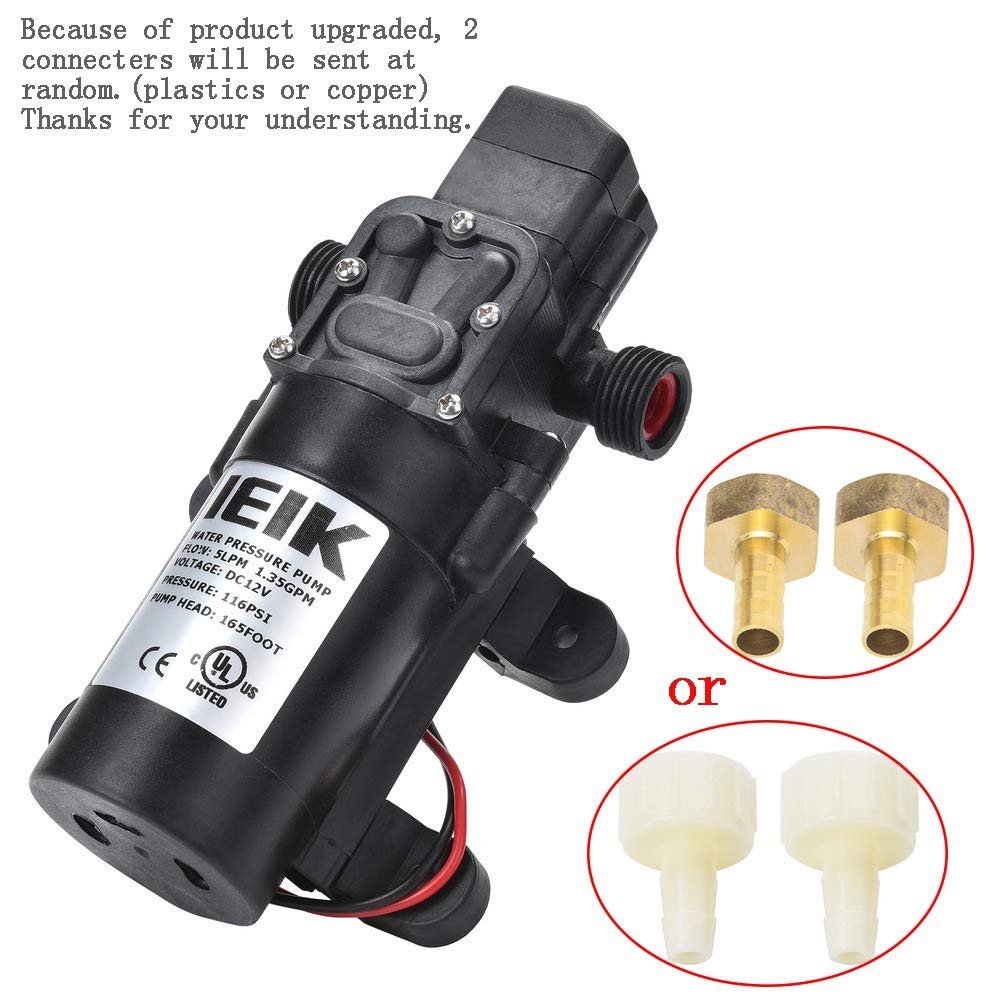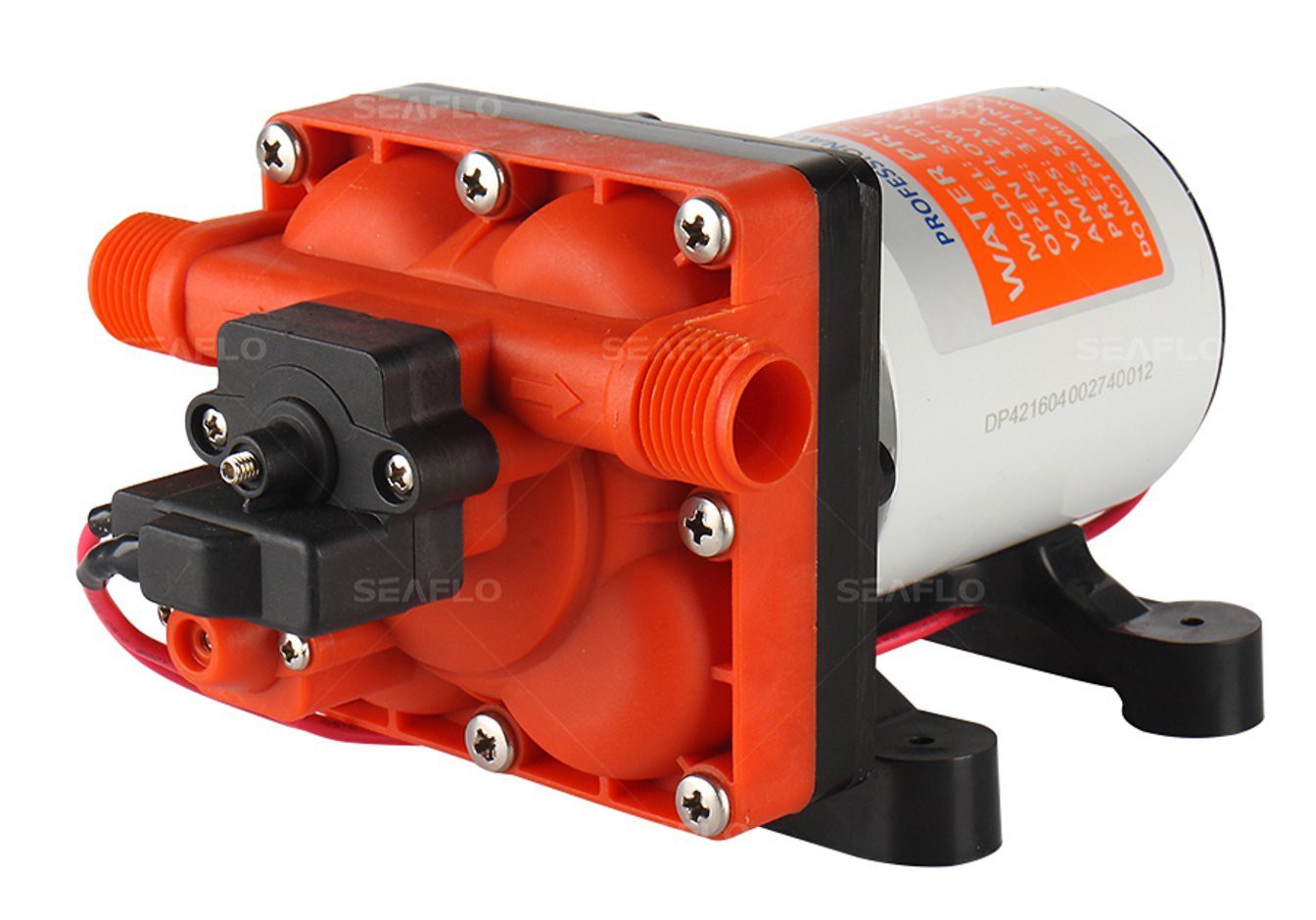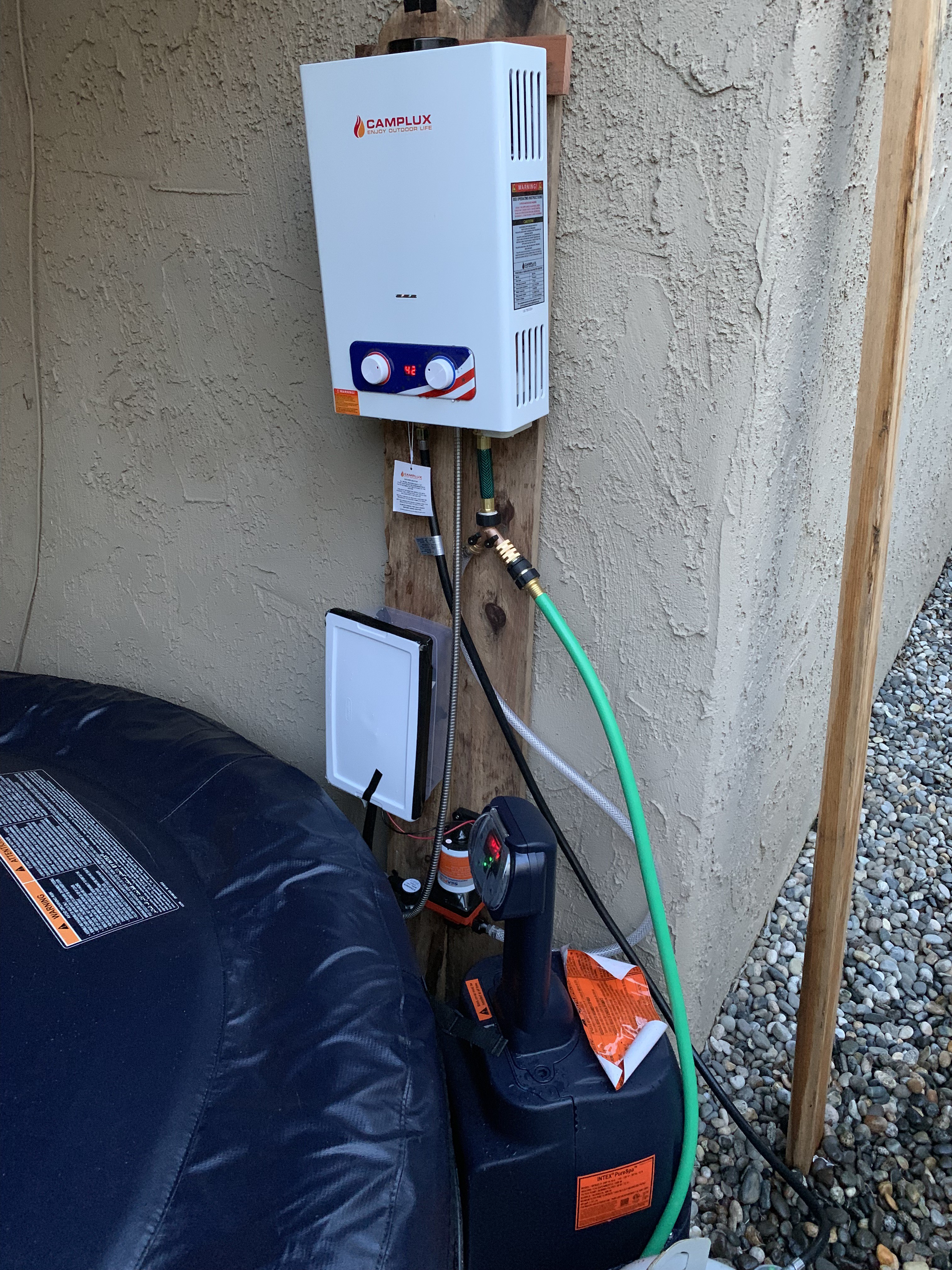So the low-hanging-fruit solution to poor heater performance, besides "keep it full temp all the time for $100/mo," is a camp shower. For about $120 on Amazon, you can buy a propane-fired continuous on-demand water heater meant to take cold-af garden hose water and spit out a shower. Sounds like JUST the ticket.
Of course, at first I considered putting a coil of copper pipe in the webber grill next to the tub, but for about 38 reasons, I'm glad I bought this instead:
https://www.amazon.com/gp/product/B073F1PVHN/ref=ppx_yo_dt_b_search_asin_title?ie=UTF8&psc=1

These things are super simple, and pretty robust: there's a flame knob, a water flow knob, an outlet temperature indicator, and a battery box. The batteries are used to trigger a gas solenoid and ignitor when a flow sensor detects sufficient water flow. Literally - turn on the hose, the whole thing fires up. Turn off the hose, flame off. The temperature knob is pretty self evident - more red = more flame = more hot. The water flow knob is a little less so - for a given flame setting, lower flow = hotter output, and higher flow = stronger water pressure, but colder.
Of course, there's still the problem of how to pump water INTO the heater.
A simple aquarium pump won't do, because they don't produce enough static pressure. A utility pump would, but I wanted to avoid sticking power lines in the hot tub with live, mortal humans, UL rating be damned. Of course, the prior art points us to the correct solution: a demand pump.

These things are designed for RVs and sailboats. From a 12V source, they pump a modest flow of water (1-5L/min) at an outlet pressure similar to your tap (between 40 and 60 PSI depending on the pump and setting). They have a pressure switch on the output, so that if the high end of that pressure is reached, they auto shut off, and if the pressure drops, they turn on. Open the tap, get pumped flow. Close the tap? Pump stops.
This is extra convenient in our case, because we can control the pump and therefore heater either electrically OR hydraulically, by simply turning off a valve somewhere in the pressurized section of our heater circuit.
I do have one bit to add that the prior art doesn't make super clear: in the realm of demand pumps, you get what you pay for, or more accurately, you lose what you don't pay for.
Wanting to be cheap, this is the first pump I bought:
https://www.amazon.com/gp/product/B072XLZX72/ref=ppx_yo_dt_b_search_asin_title?ie=UTF8&psc=1

It's under $20, but it's HELLISHLY loud. Like, I wadded it up in a pile of towels and still couldn't in good conscience run it at hot-tub-oclock, much less set it up on automatic control. I even measured the sound with an iPhone app - 74.6 dB at 2m away without the towel. It was car-engine-with-hood-open loud.
So back it went, in exchange for this one at 3X the price ($60):
https://www.amazon.com/gp/product/B01CQ7DD0S/ref=ppx_yo_dt_b_search_asin_title?ie=UTF8&psc=1

This one clocked in at 52.6 dB at 2m, which my Amazon review notes tell me was slightly quieter than the circulation pump built into the hot tub. And even then, I think the dominant component of that 52.6 was actually the propane burner, not the pump itself.
So, like, definitely spend the money on a quiet pump.
Finally, you'll want to power it. 12V AC bricks are a dime a dozen, no big deal:
https://www.amazon.com/gp/product/B003TUMDWG/ref=ppx_yo_dt_b_search_asin_title?ie=UTF8&psc=1
So how's it all hooked up?
I've made some modifications since, but this is how I first put this together:

For one, all of the electronics are in that tupperware, with a healthy dose of tape around the side. It's not exactly an IP rating, but at least I feel more comfortable that, this way, a splash from the tub won't arc us all to kingdom come. You'll also notice the creative plumbing. The heater comes with male and female garden hose adapters, since that's the plumbing everyone typically has on hand for stuff like this. In this case, I'm abusing the female GHT (garden hose thread) adapter as an inlet, so I can use that Y to select between the pump, or the actual hose, or neither. The idea was that this way, I can (re)fill the tub with pre-heated water straight from the tap. In practice, it's not really relevant. Of course, the thermal limit on time-to-comfy is how much heat the heater can put into the water flowing. I'd do just as well to put the circulation pump on, turn the heater full blast, and put the garden hose right in the tub to fill.
The other half of the idea was to enable using the setup as an actual outdoor shower, pre-tub. This gets fully fleshed out, but much later.
At this point, the heater setup is good to go. The pump has always-on power, but you just flip the valve closed and the pump shuts off and water stops. Note, the hose from the pump to the valve is BRAIDED vinyl - it's got to hold potentially 50 or 60 PSI. Unreinforced hose would probably just pop after a bit. The garden hose fittings are, of course, rated for that pressure.
Probably not for the chlorine, but we'll get there later. They've held up so far, but next time, I'd probably use PVC all around. It's cheaper, anyway.
(Much) more to come.
 alexwhittemore
alexwhittemore
Discussions
Become a Hackaday.io Member
Create an account to leave a comment. Already have an account? Log In.